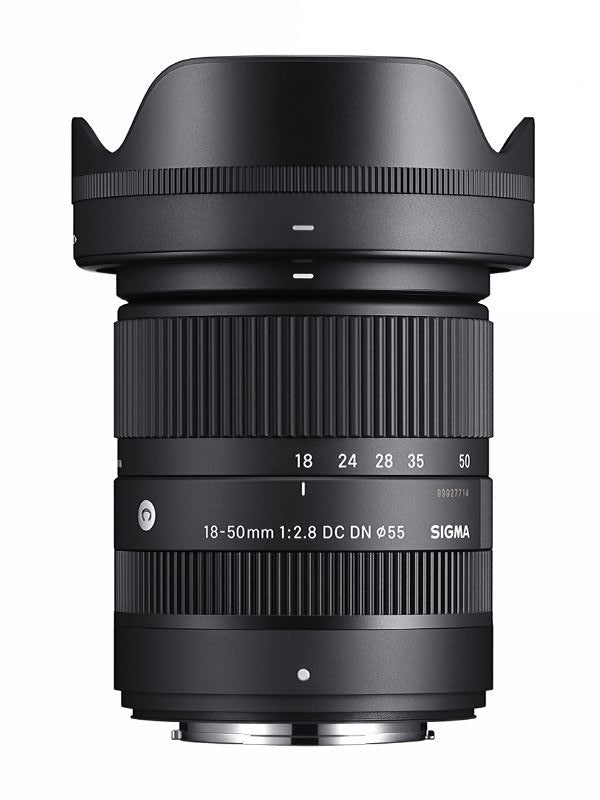Product Description
Sigma 18-50mm F2.8 DC DN Contemporary - Fuji X Mount
- Petal-type lens hood
- Simple dust- and splash-proof design
- Designed to minimise flare and ghosting
- Every single lens undergoes SIGMA’s proprietary MTF measuring system ‘A1’
- 7-blade rounded diaphragm
- High-precision, durable brass bayonet mount
- ‘Made in Japan’ craftsmanship
The lens has a full-frame-equivalent zoom range of 27mm to 75mm, with superb edge-to-edge sharpness at all apertures owing to the latest optical design technology. This includes one Special Low Dispersion (SLD) element and three aspherical elements to control unwanted optical aberrations such a chromatic aberration.

The constant aperture of F2.8 allows for a shallow depth-of-field, making it easy to achieve blurry backgrounds. A fast aperture also makes it easier to shoot hand-held in low light – ideal for weddings and other situations where a tripod isn’t convenient. The 18-50mm has a minimum focusing distance of 12.1cm and a maximum magnification of 1:2.8, perfect for capturing close-ups of smaller subjects such as flowers and insects.

Exceptionally compact and lightweight body
Weighing less than 300g and measuring just under 77mm in length the 18-50mm F2.8 DC DN | Contemporary is the smallest and lightest lens in its class, balancing well with modern APS-C mirrorless camera bodies. It combines an aluminium internal structure with a Thermally Stable Composite (TSC) outer barrel to produce a robust but compact product that can withstand the rigours of daily use. Aluminium and TSC have a similar thermal expansion rate, helping the lens to deliver consistent results as temperatures change.


























